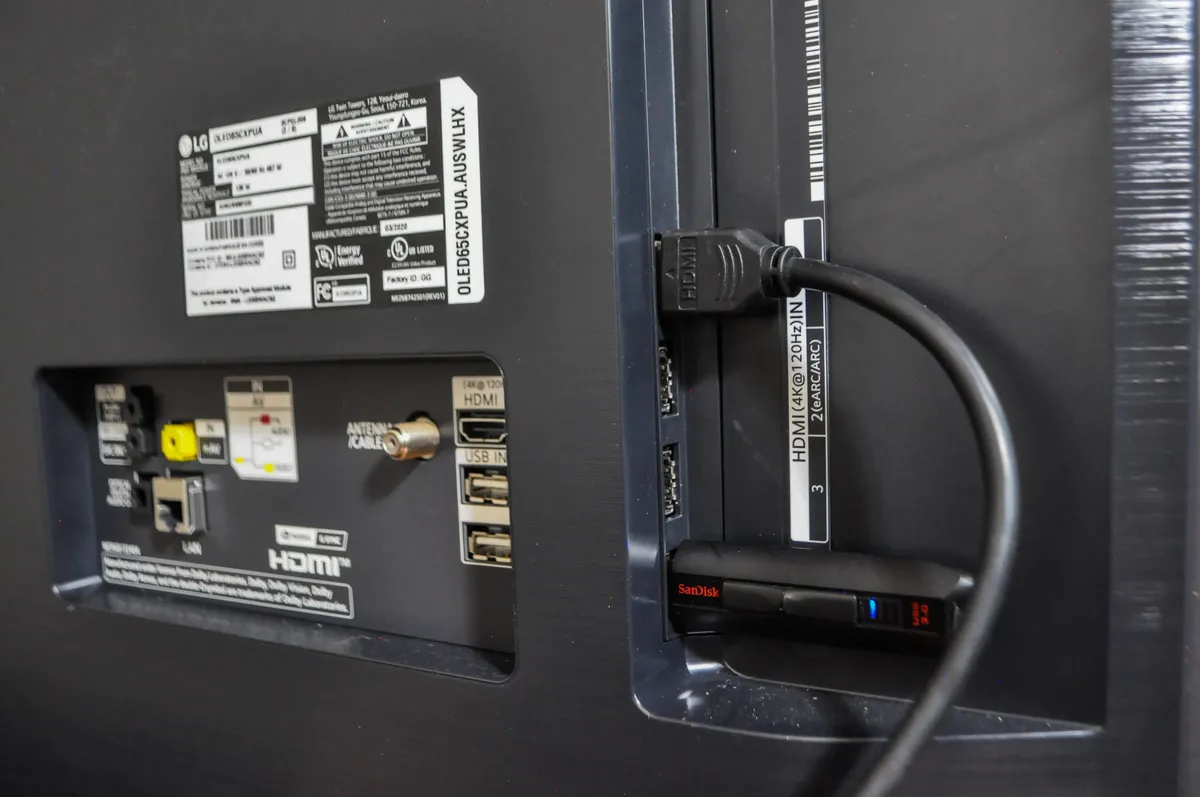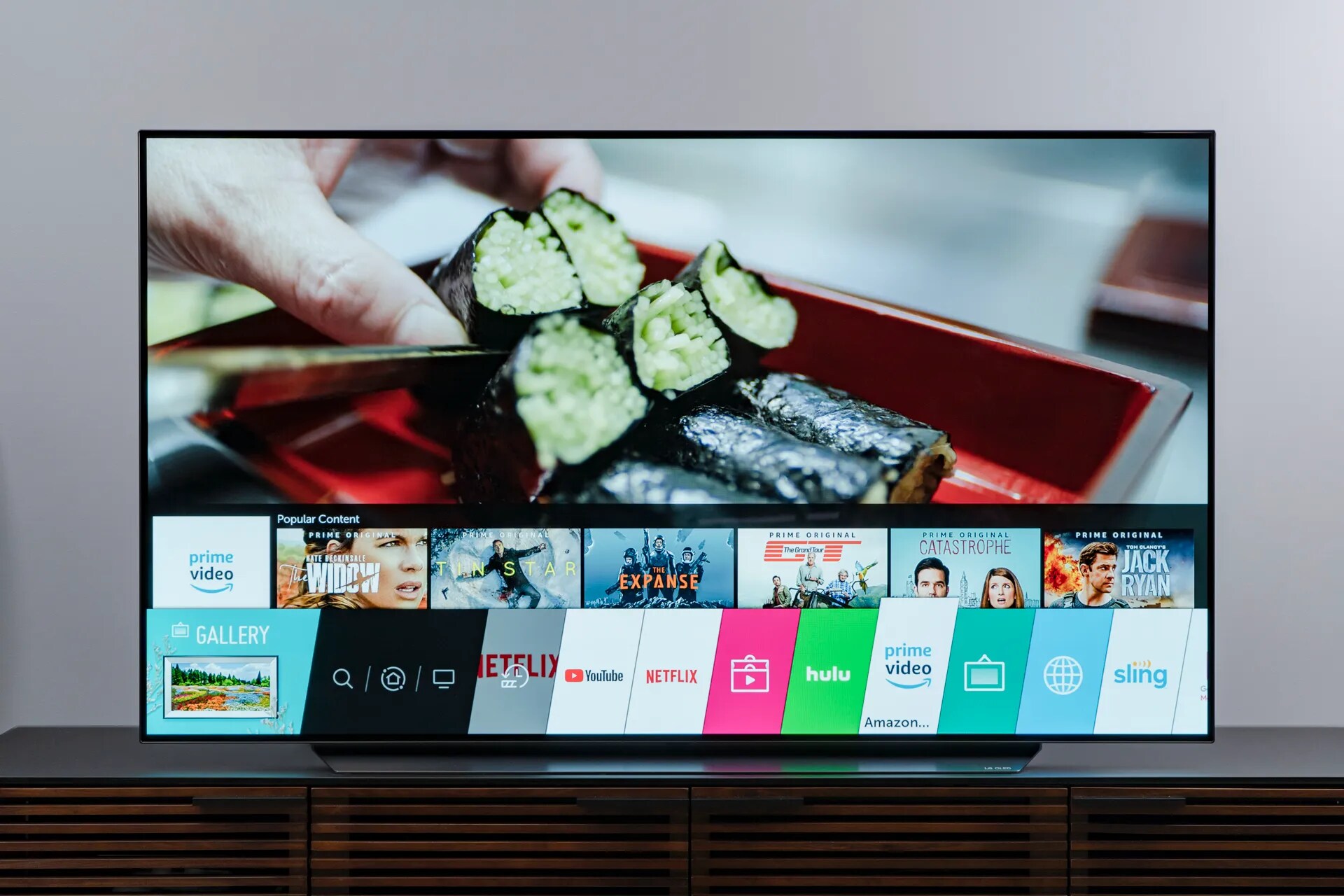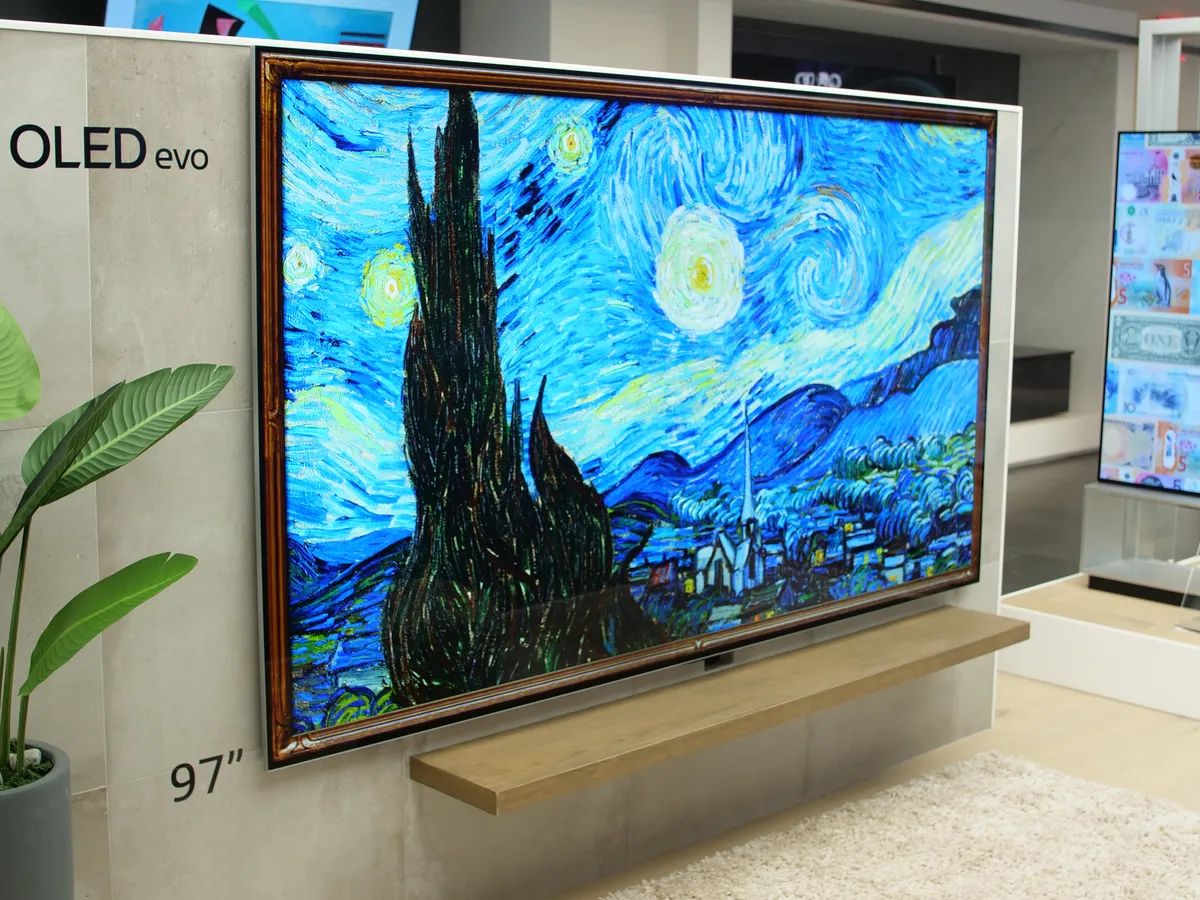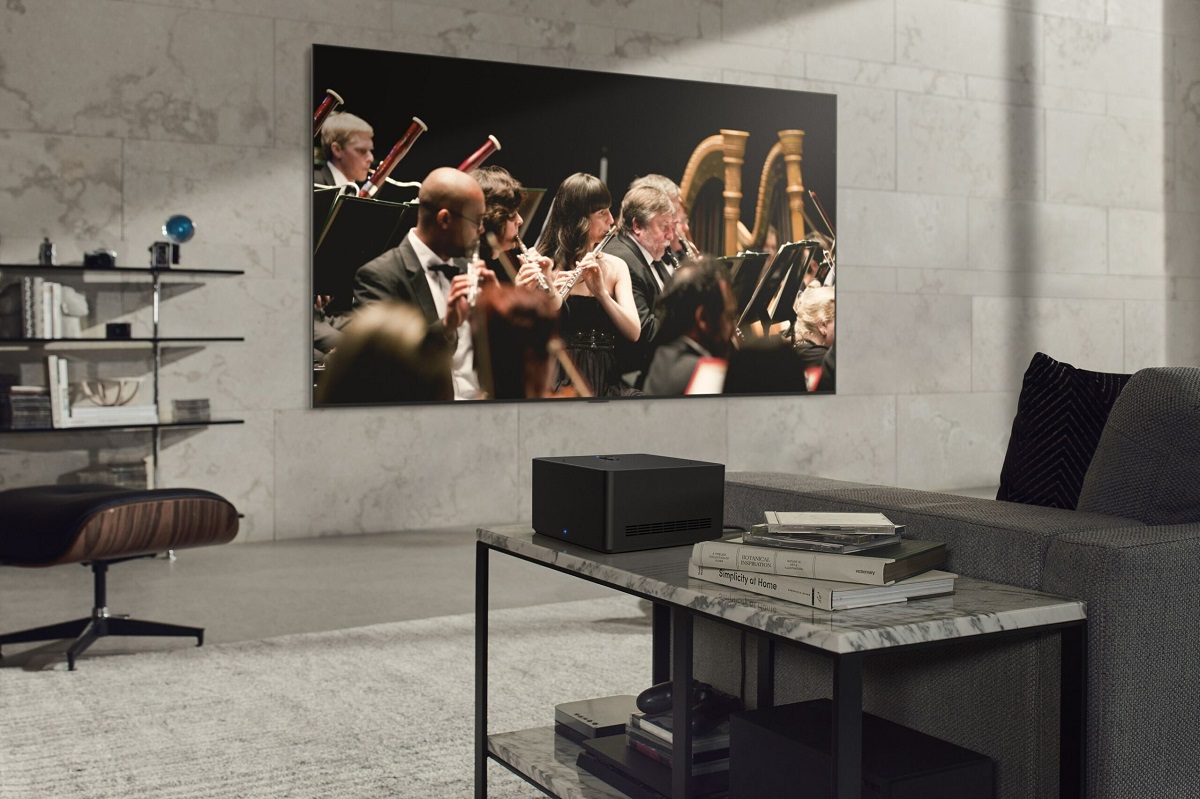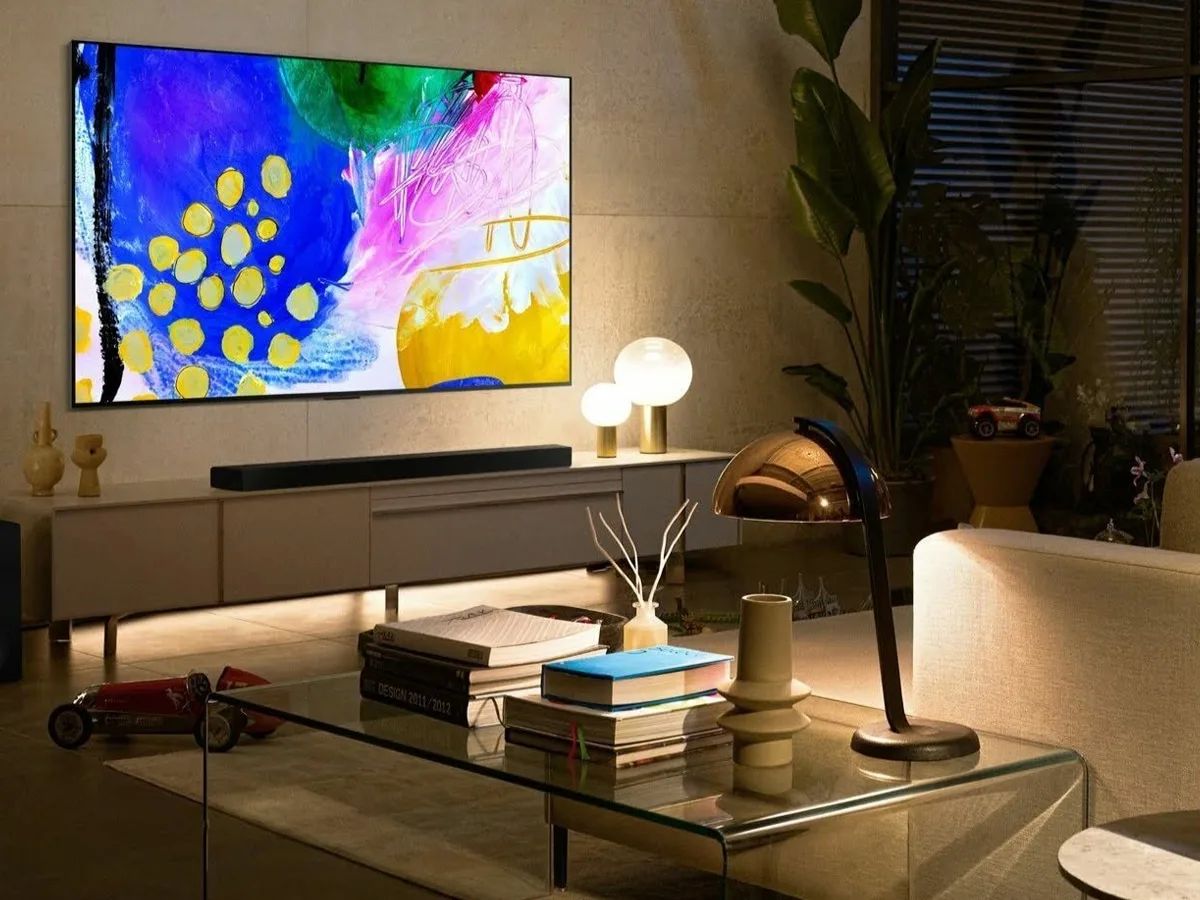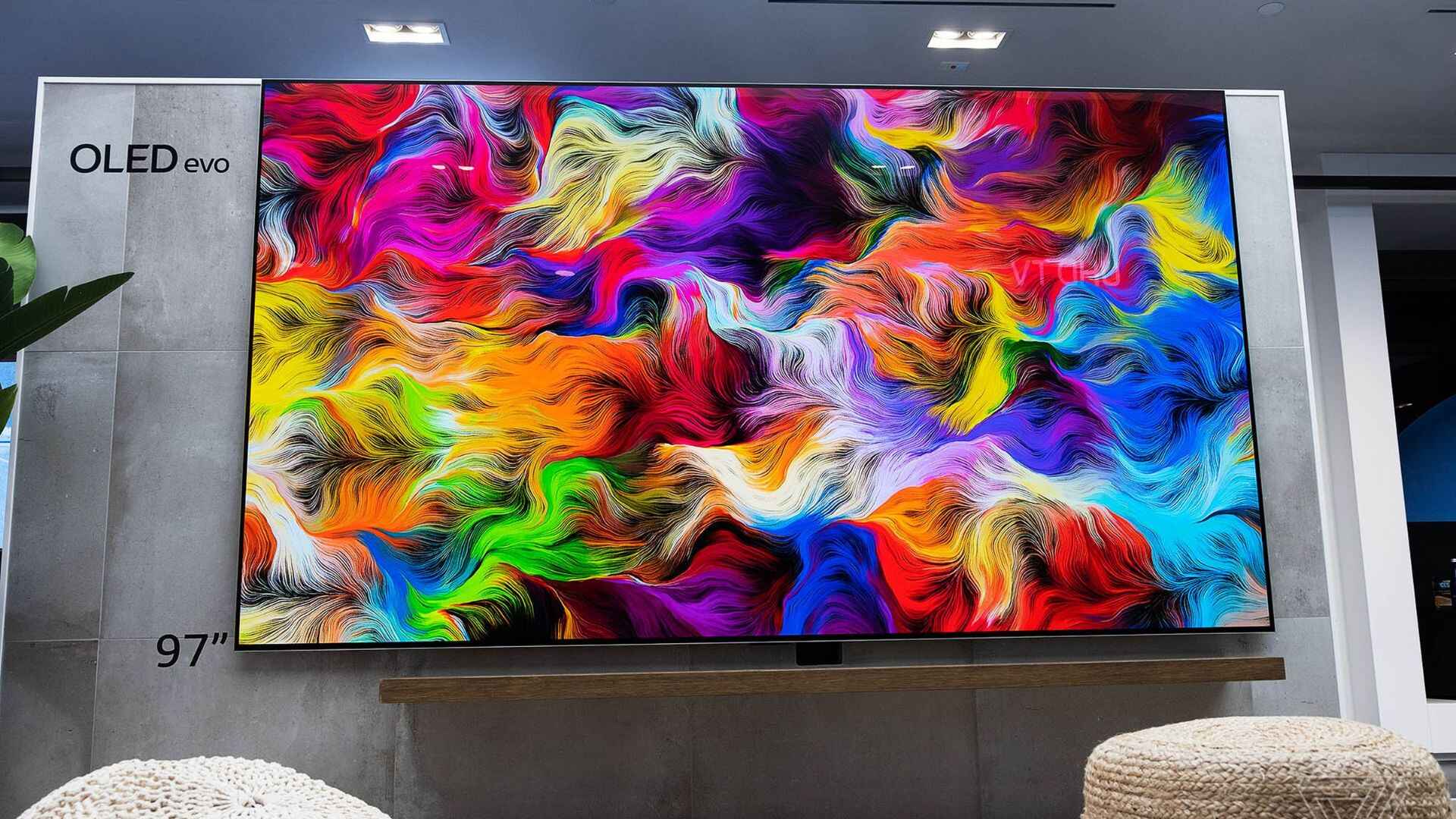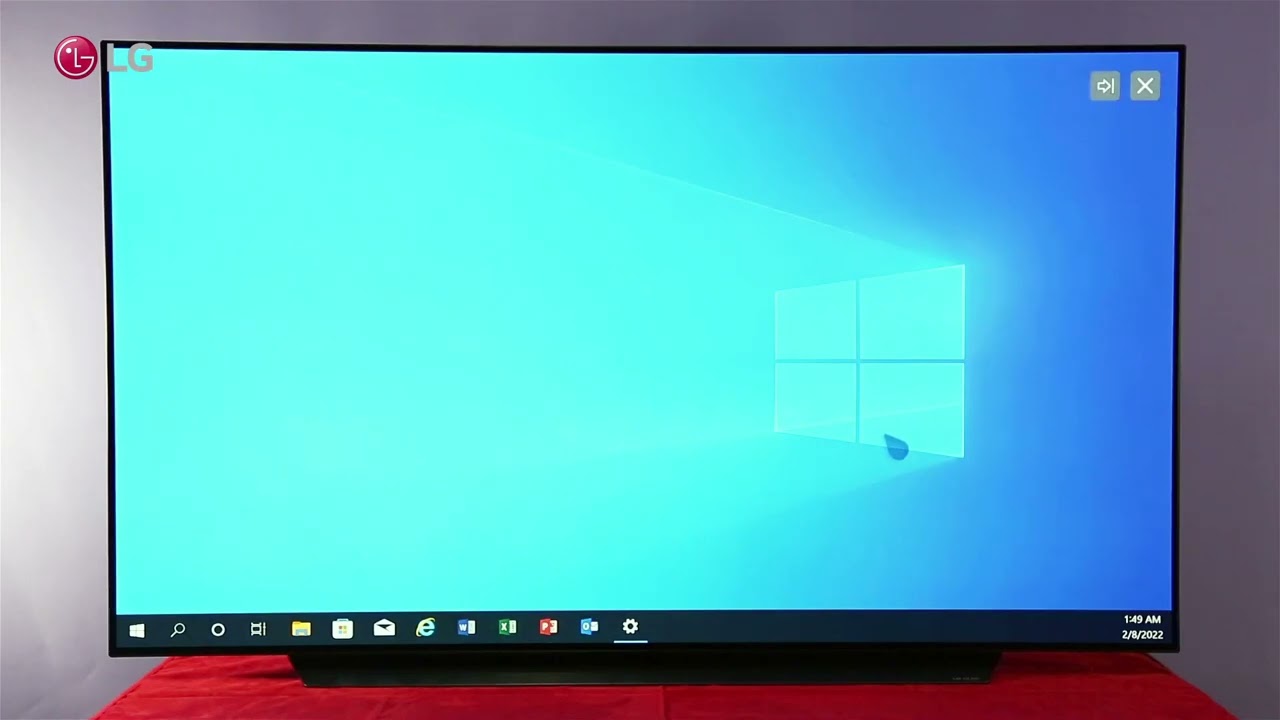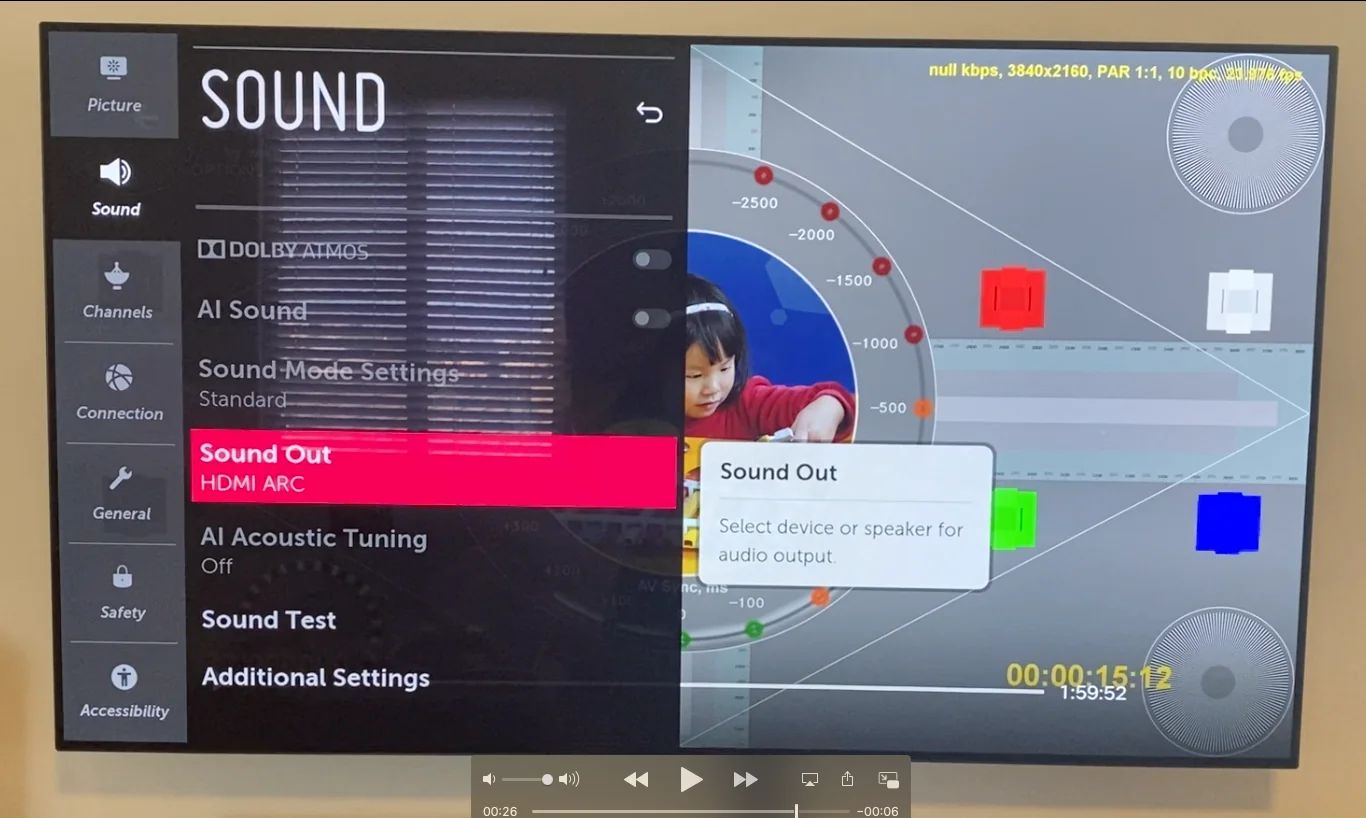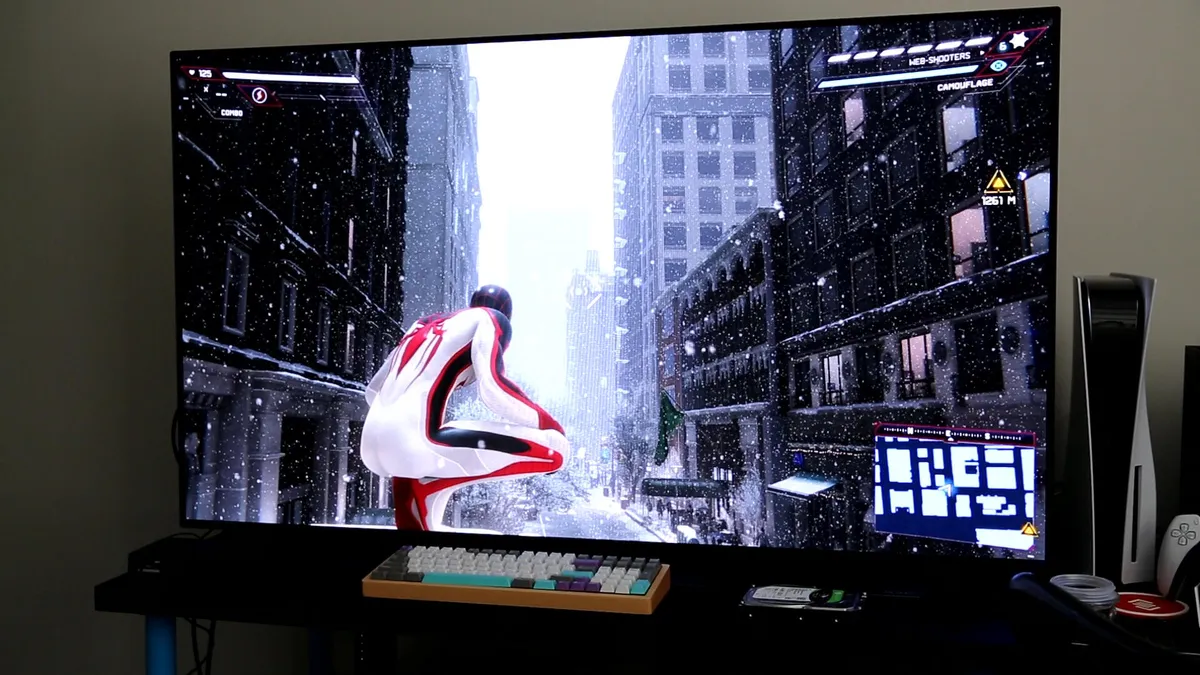Introduction
LG OLED TVs have gained immense popularity among consumers due to their stunning picture quality and innovative features. These sleek and sophisticated televisions offer an immersive viewing experience, making them a top choice for home entertainment. One of the key features of LG OLED TVs is the presence of HDMI ports, which allow users to connect various external devices seamlessly.
HDMI (High Definition Multimedia Interface) is a standard interface used for transmitting high-quality audio and video signals from one device to another. It simplifies the process of connecting devices like gaming consoles, Blu-ray players, soundbars, and streaming devices to your LG OLED TV, eliminating the need for complicated wiring setups.
In this article, we will delve into the topic of HDMI ports on LG OLED TVs and answer a common question: how many HDMI ports does an LG OLED TV have? We will also discuss the advantages of having multiple HDMI ports and the importance of HDMI 2.1 in today’s digital landscape.
If you’re a tech enthusiast or considering purchasing an LG OLED TV, this article will provide you with valuable insights into the world of HDMI ports and their significance in enhancing your viewing experience. So, let’s get started and explore the fascinating world of LG OLED TVs and HDMI connectivity.
HDMI Ports Explained
HDMI ports play a crucial role in connecting external devices to your LG OLED TV. These ports serve as a gateway for transmitting high-quality audio and video signals, ensuring a seamless and immersive viewing experience.
An HDMI port is a standardized interface that allows you to connect various devices, such as gaming consoles, Blu-ray players, streaming devices, and soundbars, to your LG OLED TV. HDMI provides a digital connection, which means there is no loss of quality during the transfer of audio and video signals.
HDMI cables are relatively simple to use. You can easily connect one end of the HDMI cable to the HDMI port on your LG OLED TV and the other end to the HDMI port on the external device. Once connected, the TV recognizes the device, and you can start enjoying your favorite content.
There are different versions of HDMI, with the most common ones being HDMI 1.4, HDMI 2.0, and HDMI 2.1. Each version offers different capabilities and features.
HDMI 1.4 supports a maximum resolution of 1080p and can handle standard surround sound formats. This version is sufficient for most devices that don’t require ultra-high resolution or advanced audio formats.
HDMI 2.0 is an upgraded version that supports 4K resolution at 60 frames per second (fps) and can handle higher bandwidth. This allows for a more detailed and smoother image quality, especially when viewing content in 4K or playing games with higher frame rates.
HDMI 2.1 is the latest version of HDMI and offers even greater capabilities. It supports higher resolutions, including 8K, and higher refresh rates up to 120Hz. HDMI 2.1 also supports advanced features like Variable Refresh Rate (VRR), Auto Low Latency Mode (ALLM), and enhanced Audio Return Channel (eARC). These features enhance gaming experiences, reduce input lag, and improve audio quality.
Overall, HDMI ports provide a convenient and standardized way to connect external devices to your LG OLED TV. They ensure that you can enjoy high-quality audio and video content without the hassle of complicated setups or loss of signal quality.
LG OLED TV Models and HDMI Ports
LG offers a wide range of OLED TV models, each with its own set of features and specifications. When it comes to HDMI ports, the number and type of ports may vary depending on the specific model of LG OLED TV you choose.
Most LG OLED TVs come equipped with multiple HDMI ports to provide flexibility and convenience when connecting various devices. The number of HDMI ports can range from two to four, or even more in some higher-end models.
For example, the LG C1 OLED TV, one of LG’s flagship OLED models, typically features four HDMI 2.1 ports. These ports support the latest HDMI standards, enabling you to take full advantage of advanced features like 4K resolution at high frame rates, VRR for smoother gaming, and eARC for enhanced audio reproduction.
On the other hand, entry-level or mid-range LG OLED TV models may feature fewer HDMI ports, usually between two and three. While these models may have fewer ports, they still provide ample connectivity options for most users.
It’s essential to consider your specific needs and the number of devices you plan to connect to your LG OLED TV when choosing a model. If you have multiple devices, such as a gaming console, Blu-ray player, soundbar, and streaming device, having more HDMI ports can simplify the setup process and eliminate the need for external HDMI switches or splitters.
Additionally, it’s crucial to pay attention to the types of HDMI ports available on the TV. HDMI ports can be labeled as HDMI 1, HDMI 2, HDMI 3, and so on, or they may be specified as HDMI ARC (Audio Return Channel) ports. HDMI ARC ports support the two-way transmission of audio signals and are typically used for connecting soundbars or home theater systems.
Before making a purchasing decision, ensure that the LG OLED TV model you are considering meets your specific requirements in terms of HDMI ports. Having the right number and type of ports can make a significant difference in the convenience and versatility of your entertainment setup.
How Many HDMI Ports does LG OLED TV have?
When it comes to the number of HDMI ports on LG OLED TVs, it varies depending on the model. LG offers a diverse lineup of OLED TVs, ranging from entry-level to high-end models, and the number of HDMI ports is one of the factors that differ between them.
Typically, LG OLED TVs come with a minimum of two HDMI ports, providing users with basic connectivity options. This allows users to connect essential devices like a Blu-ray player and a gaming console simultaneously.
However, as you move up the range to more advanced models, you can expect to find additional HDMI ports. Mid-range LG OLED TVs often feature three HDMI ports, which is ideal for users who want to connect more than just basic devices.
For users with more extensive connectivity needs, LG’s high-end OLED TV models often provide four or more HDMI ports. This allows users to connect a wide range of devices such as game consoles, media players, set-top boxes, soundbars, and even PCs without the need for additional HDMI switches or splitters.
When selecting an LG OLED TV, it is crucial to consider the number of HDMI ports based on your requirements. Think about the devices you plan to connect to your TV and ensure that there are enough available ports to accommodate them all comfortably.
Additionally, it’s worth noting that the HDMI ports on LG OLED TVs are typically HDMI 2.0 or HDMI 2.1 ports, depending on the model. HDMI 2.1 ports offer enhanced features such as higher resolution support, increased refresh rates, and advanced gaming features.
In summary, the number of HDMI ports on LG OLED TVs varies depending on the model, with entry-level models typically featuring two ports and high-end models offering four or more ports. Choosing a TV with an adequate number of HDMI ports ensures that you can easily connect all your devices and enjoy a seamless home entertainment experience.
Advantages of having Multiple HDMI Ports
Having multiple HDMI ports on your LG OLED TV offers several advantages and conveniences that enhance your overall entertainment experience. Let’s explore the key benefits of having multiple HDMI ports:
- Easy device connectivity: With multiple HDMI ports, you can easily connect and switch between different devices without the need for frequent cable swapping or using external HDMI switches. This means you can keep your gaming console, Blu-ray player, streaming device, and other devices connected simultaneously, ready to use whenever you want.
- Streamlined setup: Having multiple HDMI ports simplifies the setup process since you can keep your devices connected at all times. You won’t need to crawl behind your TV every time you want to connect a different device. This convenience is especially useful if you regularly switch between devices for different purposes, such as gaming, streaming, or watching movies.
- Seamless entertainment experience: Multiple HDMI ports allow you to enjoy a seamless entertainment experience. You can effortlessly switch between devices with just a few clicks on your remote control, eliminating the hassle of manually reconnecting cables or dealing with compatibility issues.
- Enhanced multi-functionality: With multiple HDMI ports, you can transform your LG OLED TV into a hub for all your entertainment needs. You can connect various devices like gaming consoles, media players, soundbars, and home theater systems, creating a comprehensive multimedia setup that caters to different preferences and requirements.
- Flexible device placement: Having multiple HDMI ports gives you the freedom to place your devices wherever you prefer. You can keep your gaming console near your TV, while your Blu-ray player can be tucked away in a cabinet. This flexibility allows you to streamline wires and cables and maintain a clutter-free entertainment area.
- Future-proofing: As technology evolves, newer devices may require HDMI connections. By having multiple HDMI ports, you future-proof your entertainment setup, ensuring you can easily connect and enjoy the latest devices without any limitations.
Overall, the advantages of having multiple HDMI ports on your LG OLED TV encompass enhanced connectivity, streamlined setup, and a seamless entertainment experience. By choosing a TV model with multiple HDMI ports, you can create a versatile and convenient entertainment setup that caters to your various multimedia needs.
Connecting Devices to LG OLED TV
Connecting external devices to your LG OLED TV is a simple and straightforward process. Here are the steps to connect different devices:
- Gaming Consoles: To connect a gaming console, such as a PlayStation or Xbox, locate an available HDMI port on your LG OLED TV. Insert one end of the HDMI cable into the HDMI port on the console and the other end into the HDMI port on the TV. Make sure to select the corresponding HDMI input on your TV to switch to the gaming console’s display.
- Blu-ray Players: For Blu-ray players, find an available HDMI port, just like with gaming consoles. Connect one end of the HDMI cable to the Blu-ray player and the other end to the TV. Select the correct HDMI input on your TV, and you’ll be ready to watch your favorite movies in high-definition.
- Streaming Devices: To connect streaming devices like Roku, Amazon Fire Stick, or Apple TV, locate an available HDMI port. Connect one end of the HDMI cable to the streaming device and the other end to the TV. Switch the TV to the corresponding HDMI input and follow the on-screen instructions to set up and enjoy your streaming content.
- Soundbars or Home Theater Systems: If you have a soundbar or home theater system, look for an HDMI ARC (Audio Return Channel) port on your LG OLED TV. Connect one end of the HDMI cable to the ARC port on both the TV and the soundbar/home theater system. This allows for two-way audio transmission, eliminating the need for additional audio cables.
- PC or Laptop: To connect your PC or laptop to your LG OLED TV, find an available HDMI port. Connect one end of the HDMI cable to the HDMI output port on your computer and the other end to the TV. Adjust the display settings on your computer to ensure the TV is recognized as the display device.
After connecting the devices, switch your LG OLED TV to the appropriate HDMI input using your TV remote or on-screen menu. Most modern TVs have an input/source button that allows you to cycle through the available HDMI inputs easily.
Once connected, you can control the devices using their respective remotes or universal remotes that support multiple devices. Your LG OLED TV will display the content from the connected device, providing you with an immersive and enjoyable viewing experience.
Remember to refer to the user manuals of your specific devices for any additional setup steps or specific configurations that may be required for optimal performance.
The Importance of HDMI 2.1 and its Impact on HDMI Ports
HDMI 2.1 is the latest version of the HDMI standard and brings significant advancements in terms of audiovisual capabilities and features. It has a notable impact on the HDMI ports found on LG OLED TVs, as it unlocks enhanced performance and compatibility. Let’s explore the importance of HDMI 2.1 and its impact:
1. Higher Resolutions: HDMI 2.1 supports higher resolutions, including 4K at 120 frames per second (fps) and even 8K at 60 fps. This means that if your LG OLED TV has HDMI 2.1 ports, you can enjoy incredibly crisp and detailed visuals, providing a more immersive viewing experience.
2. Increased Refresh Rates: HDMI 2.1 also allows for higher refresh rates, enabling smoother motion and reducing motion blur. With supported devices and content, you can benefit from refresh rates up to 120Hz, ideal for gaming and fast-action scenes in movies or sports.
3. Variable Refresh Rate (VRR): HDMI 2.1 introduces VRR, which synchronizes the refresh rate of the TV with the output of the connected device. This means that the TV can adapt its refresh rate in real-time to match the device, reducing screen tearing and providing a smoother gaming experience.
4. Auto Low Latency Mode (ALLM): ALLM is another feature supported by HDMI 2.1, designed to automatically switch the TV to its lowest latency mode when a compatible gaming device is detected. This minimizes input lag, ensuring a more responsive gaming experience with quicker reaction times.
5. Enhanced Audio: HDMI 2.1 also brings improvements in audio technology. It introduces eARC (Enhanced Audio Return Channel), which supports higher-quality audio formats and allows for uncompressed and object-based audio, such as Dolby TrueHD and DTS-HD Master Audio. This enables more immersive and high-fidelity sound when connected to compatible audio systems.
6. Forward Compatibility: By having HDMI 2.1 ports on your LG OLED TV, you future-proof your setup. As more devices adopt HDMI 2.1 standards, you’ll be able to take full advantage of their capabilities without the need for additional adapters or cable upgrades.
It’s important to note that while HDMI 2.1 offers advanced features and capabilities, it is backward compatible with previous HDMI versions. This means that you can still connect devices supporting HDMI 1.4 or HDMI 2.0 to an HDMI 2.1 port on your LG OLED TV, although you may not be able to experience the full benefits of HDMI 2.1 features with those devices.
In summary, HDMI 2.1 has a significant impact on the HDMI ports found on LG OLED TVs. Its support for higher resolutions, increased refresh rates, VRR, ALLM, enhanced audio, and forward compatibility ensures a more immersive and advanced multimedia experience. If you have an LG OLED TV with HDMI 2.1 ports, you’ll be able to enjoy the full benefits of these features when connected to compatible devices.
Conclusion
In conclusion, HDMI ports play a crucial role in connecting external devices to LG OLED TVs, offering a seamless and immersive viewing experience. LG OLED TVs come with a varying number of HDMI ports, ranging from two to four or even more in high-end models, providing users with the flexibility to connect multiple devices simultaneously.
Having multiple HDMI ports on your LG OLED TV offers numerous advantages. It simplifies device connectivity, eliminates the need for frequent cable swapping, and allows for a streamlined setup. Multiple HDMI ports enable a seamless entertainment experience as you can effortlessly switch between devices without any manual reconnection or compatibility issues.
Moreover, HDMI 2.1, the latest HDMI version, brings significant enhancements to HDMI ports on LG OLED TVs. It supports higher resolutions, increased refresh rates, variable refresh rate (VRR), auto low latency mode (ALLM), and enhanced audio, delivering an even more immersive and high-quality viewing and gaming experience.
When connecting devices to your LG OLED TV, follow the specific steps for each device, ensuring that you select the correct HDMI input. Keeping multiple devices connected to your TV allows for a versatile and convenient entertainment setup that caters to your diverse multimedia needs.
By understanding the importance and impact of HDMI 2.1, you can make informed choices when selecting an LG OLED TV with HDMI ports that meet your requirements and future-proof your entertainment setup.
In conclusion, HDMI ports and their connectivity options on LG OLED TVs provide users with the flexibility, convenience, and enhanced audiovisual capabilities necessary to create a truly immersive and enjoyable home entertainment experience.







